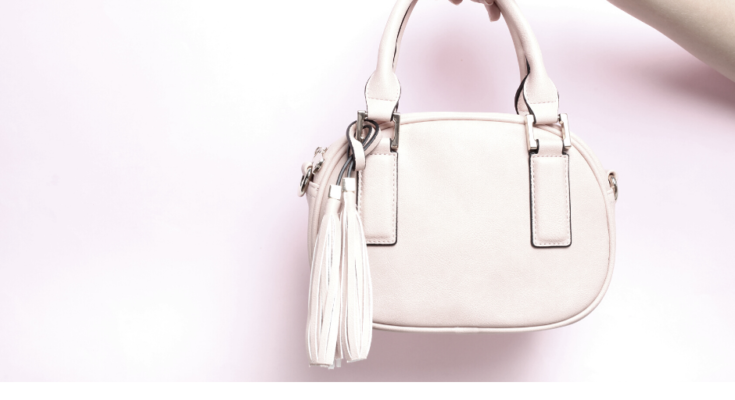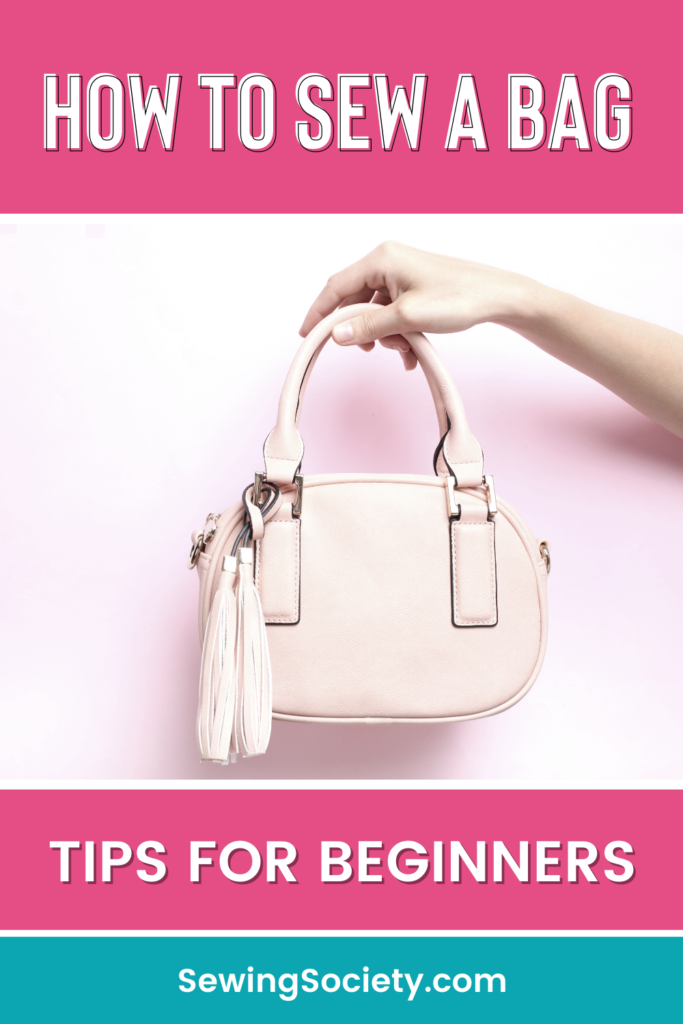Disclosure: This post may contain affiliate links. I earn a small commission when you click a link and make a purchase. Thanks for supporting SewingSociety.com!
Have you ever gawked at the beautiful handbags from Chanel, Prada, Dior, and other famous designers? Most people cannot afford to own one, but if you have a sewing machine, you can make a bag that is just as beautiful and high quality.
I really enjoy bag making. I recently sewed a large duffel bag out of faux leather. Bag making is not as difficult as you think… We hope you’ll give it a try. We’ve got five amazing tips to share to help you do it right!
1. Wonder Clips and Basting Tape Are Your Friends
When you’re sewing bags, precision alignment is super important. This is best achieved with Wonder Clips and basting tape so that none of your pieces shift before they are sewn together. You should avoid using pins when sewing bags because they can damage certain types of fabric and distort your alignment.
2. Don’t Skip the Interfacing
Almost all bags require some form of interfacing for stability and shape. The type you need depends a lot on the weight of the fabric you’re using and how stable you want your bag to be. Heavyweight fabrics like canvas, denim, faux leather, and cork require less interfacing than lightweight fabrics.
Fusible fleece and Pellon 808 are two of the most used interfacings for bags. However, if you want to add enough structure for your bag to stand up on its own, use flexible foam interfacing, such as Pellon Flex Foam or Bosal In-R-Foam.
If this all seems confusing, don’t fret — most bag patterns will give you suggestions on what interfacing to buy.
3. Always Clip Curves and Trim Seam Allowances
All the interfacing you use when sewing bags can lead to bulky seams. To get a cleaner and more professional look, use some detail scissors to trim seam allowances back to 1/8”. However, read your instructions first to make sure this won’t interfere with future steps, such as adding bias binding.
Also clip around curves and corners to reduce bulk. If you don’t know how to do this, you can watch a quick tutorial HERE. A poking tool, such as That Purple Thang is also helpful.
4. Press Everything as You Sew
Pressing each step of your project is good advice no matter what you’re sewing. Everything seems to go smoother and line up better. Just be careful when pressing near any metal hardware so that you don’t damage your iron.
Of course, pressing is more difficult when you’re sewing vinyl and faux leather because it can melt. There are rolling tools you can use instead. We also suggest that you read THIS POST on how to sew faux leather if that is the material you’re using for your bag because there are too many tips to share here.
5. Choose Your Hardware Carefully
Hardware can make or break your bag — the small details are important. You can buy bag making supplies all over the internet, but we suggest going to a quality source, like Sallie Tomato. They offer hardware in several metal finishes and have practically everything you need — swivel clips, rings, twist locks, buckles, sliders, purse feet, etc.
Do you have any other bag-making tips to share? Leave your suggestions in the comments below.
Share this post on Pinterest!






One Comment on “How to Sew a Bag: 5 Tips for Beginners”